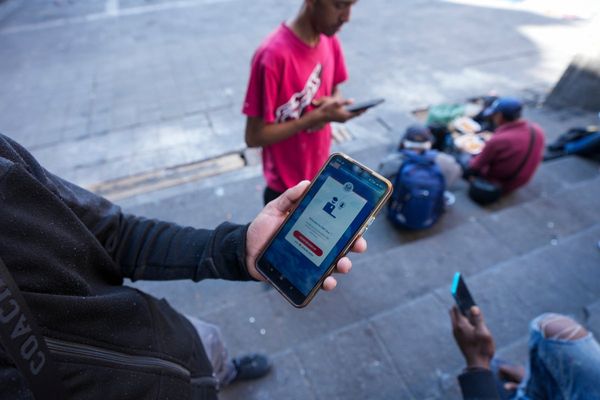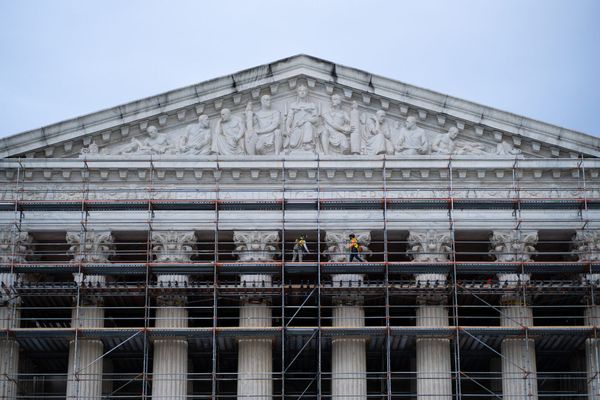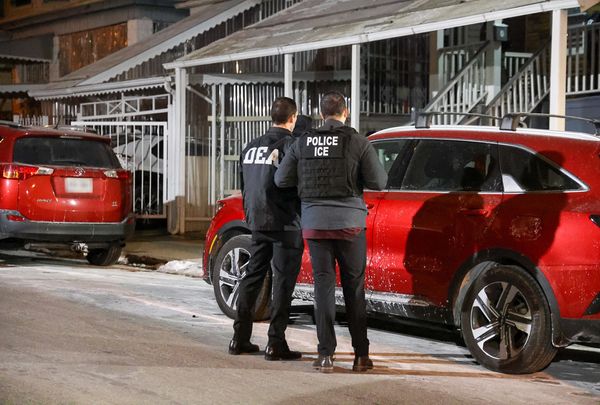After Fred Bretthauer left COVID-19 isolation, the 72-year-old dispute mediator felt well enough to play a gig with his band.
He and his wife, Leonie Smith, who live in Sydney, had tested positive to COVID-19 in mid-July.
Mr Bretthauer met the eligibility criteria for Paxlovid, an antiviral treatment shown to reduce the symptoms and severity of COVID-19. At 61 years old, Ms Smith did not.
"The drug was probably having some effect, reducing the effect of the virus, and I thought, 'This is great'," Mr Bretthauer said, adding his wife had worse symptoms.
He tested negative on day six, left isolation a day later, and went off to his gig. But the next day, his symptoms re-appeared.
US President Joe Biden had just that day announced he was going into a second round of isolation in what's known as an infection "rebound" after having earlier had antiviral treatment.
Ms Smith said that, after seeing the news, she twigged that something similar was happening with her husband
"And then Fred came down and showed me the test, with a mask on, and said, 'Holy crap, I'm positive again'," she said.
Mr Bretthauer then spent more than a week experiencing mild symptoms, returning positive RATs, and trying to navigate a confusing system he felt was behind where it should be.
So what's known about these infection rebounds, and what should you do if it happens to you?
What causes a COVID-19 infection rebound after antivirals?
A rebound is different to a re-infection, and is characterised by symptoms returning or a positive RAT result after a negative test or symptoms ending.
It is reported to to occur between two and eight days after initial recovery, and illness is generally mild.
Paxlovid is a combination treatment for COVID-19 that uses two different antivirals — one that stops new, active virus particles from being made, and one that boosts that response.
A course of treatment is five days and clinical trials show it reduces the risk of admission to hospital and the chance of death by 89 per cent.
Scientists are still looking for what could be causing rebounds after Paxlovid, with theories including the treatment not going for long enough and the treatment not starting at the right time.
"It's a very complicated situation," Griffith University virologist Lara Herrero said.
"And we need to understand that an antiviral does not actually kill the virus itself, it just stops it from reproducing.
"So, if we take that antiviral pressure off, and there's any virus left in the system, it'll just start replicating again."
How common is COVID-19 rebound infection after Paxlovid?
Brisbane resident Priscilla Maxwell, 71, is one of a small but growing number of people to experience a rebound after taking Paxlovid.
She tested negative during the treatment course, but three or four days later, her symptoms came back.
"And I just went back into isolation because I didn't really want anybody else to be getting it," she said.
Australia does not currently keep data on the number of rebound infections, and research is still in its early stages.
"This seems to be rare," Doherty Institute director Sharon Lewin said.
"I think the most important thing for people to know, if this rebound occurs, is that they … most likely can be infectious again."
The US Food and Drug Administration (FDA) in May said that Paxlovid's clinical trial data showed that 1-2 per cent of patients either tested positive on a PCR after testing negative, or had an increase in the amount of the virus detected by a PCR test after finishing treatment.
In June, a US study — which is yet to be peer-reviewed — found a rebound rate of 3.53 per cent of its participants in the seven days after Paxlovid treatment and 5.4 per cent in the 30 days after the treatment.
What about other types of rebound infection?
Because Paxlovid is the most common antiviral accessed in Australia, it's the one we're hearing the most about.
Another study, which is yet to be peer-reviewed, found that 12 per cent of those studied with COVID-19 experienced a rebound, regardless of whether they had taken antivirals.
The researchers — from a range of universities, including Harvard Medical School — wrote in their pre-print paper published on medRxiv that 27 per cent of participants experienced a rebound after their symptoms initially improved, and 10 per cent had a rebound once symptoms had resolved entirely.
Professor Lewin said the study was "quite convincing that this seems to happen at higher frequency than we thought in the absence of antivirals".
What should people do if they have an infection rebound?
US Centre for Diseases Control (CDC) advice issued in May said people with rebound COVID-19 should "restart isolation and isolate again for at least five days".
However, in Australia, the advice is less clear-cut.
The federal health department said people with symptoms, whether they be a continuation or a recurrence, should continue to stay at home while they are unwell and seek advice from their usual healthcare provider.
Mr Bretthauer said he spoke to a GP who told him to stop testing and that there was no need to isolate again.
Current NSW health advice requires isolation for seven days from the first positive test result, but not beyond, unless you're still experiencing symptoms.
"I wasn't happy with that advice," Mr Bretthauer said.
"I still had symptoms … I wasn't happy to go out into the public."
Mr Bretthauer was able to work from home, and had a safe place to isolate to avoid the risk of infecting their son, who was living with them at the time.
"But if I'd had to have gone to the office, I would have spread it," he said.
In Ms Maxwell's case, it was an episode of the ABC's Coronacast that prompted her to keep RAT testing and isolate until her symptoms passed.
"But everybody was very confused," she said.
"I'm not blaming anybody. It's just we're obviously right on the cutting edge of a really experimental stage with an unknown virus."
Royal Australasian College of General Practitioners (RACGP) president Karen Price said doctors had not been given explicit advice about rebound infections.
"The most important thing is to stay home if you've got symptoms," Dr Price said.
"And, maybe, re-test to confirm whether or not you have got a rebound infection, but to still … follow all the usual protocols."
She said she expected it would be a "live question" the RACGP would work through with the health department.
Should I still take antivirals?
The experts advice the ABC received — and all of the available scientific data — is that eligible people should absolutely take antivirals if they can.
"Rebound is rare. It doesn't mean that the antivirals haven't worked. They will still work in limiting disease," Professor Lewin said.
The CDC's May advice was that the rebound was generally mild and there was no evidence further antiviral treatment would be needed. However, research is underway to determine whether antivirals would help again during the rebound period.
Scientists are also investigating whether a longer course would be useful, although the current evidence suggests it would not be.
"These antivirals are — as far as data is currently saying — still preventing death. And, let's be honest, no one wants to die," Dr Herrero said.
"So, I would I would very strongly advocate for taking the antivirals for those high-risk people."







